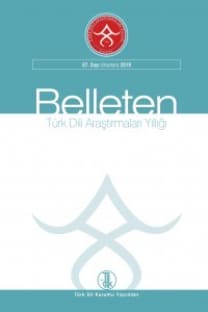YENİSEY KIRGIZLARININ ETNİK GRUBU OLARAK
FU-YU KIRGIZLARI
Fu-yu Kırgızları Çin’in kuzeydoğusunda Mançurya topraklarında 18. yüzyıldan 20. yüzyılın ortasına kadar öteki Türk dünyasından izole edilmiş hâlde yaşıyorlar. Onların toplam sayısı 2002 yılında 1.473 kişiydi. 1988 yılından beri Fu-yu Kırgızlarını Finlandiya, Rusya, Kazakistan, Polonya, Kore ve Türkiye’den araştırmacılar ziyaret ediyorlar. Bunun sonucunda çıkan birçok çalışma genellikle Fu-yu Kırgızlarının kökeninin Yenisey teorisini doğruladı. 1703 yılında Yenisey Kırgızlarından 15.000~20.000 kişi, yani Ḫongoray ülkesinin sakinlerinin büyük kısmı, Çungarya topraklarına göç etti. Rusya’nın askerî seferleri yüzünden 1706 yılında Çungarya’ya Yenisey Kırgızlarının başka bir kütlesel göç hareketi oldu. Çungarya’ya göçten hemen sonra Yenisey Kırgızlarının kısımları Ḫongoray’a dönmeye başlıyorlar. Hakasların çoğu, Çungarya’dan dönen Yenisey Kırgızlarının torunlarıdır. Mançu dilli tarihsel arşivlerde, modern Tuva’nın güney toprakları ile kuzeybatı Moğolistan’dan 1733 yılında Mançurya’ya Kırgızların göçünün ilk aşamasını anlatan belgeler bulundu. Efsanevî bilgiler Fu-yu Kırgızlarının atalarının Mançurya’ya göçünün ikinci aşaması esnasında (1755~1757 yılları) 1733 yılındakinden çok daha fazla Kırgız’ın göçürüldüğünü ima ediyor. Fu-yu Kırgızlarının dili çeyrek bin yıl boyunca bütün öteki Türk dillerinden izole edilmiş kaldı, Moğol ve Çin dillerinden etkilendi. Şimdiki aşamada Fu-yu Kırgız dili yok olma eşiğindedir. Fu-yu Kırgız dilinin kelime hazinesi genel Hakasça kelime hazinesine tekabül ediyor. Fu-yu Kırgızları, geç ortaçağın Yenisey Kırgızlarının geride kalan etnik grubudur ve aynı zamanda etnik özelliklerin tümüne göre Hakasların izole edilmiş bir grubu olarak tanımlanabilir
The Fuyu Kyrgyz as an Ethnic Group of the Yenisei Kyrgyz
The Fuyu Kyrgyz live in the territory of Manchuria in Northeast China from the XVIII century to the middle of XX century in isolation from the rest of the Turkic world. Their total population in 2002 amounted to 1,473 persons. Since 1988, the Fuyu Kyrgyz were visited by the researchers from Finland, Russia, Kazakhstan, Poland, Korea, and Turkey. As a result of this, a number of scientific papers were published, which in general confirmed the Yenisei theory of their origin. 15,000~20,000 persons of the Yenisei Kyrgyz people, i.e. the most of the inhabitants of the country Khongoray, were relocated to the territory of Dzungaria in 1703. The Russian military campaigns led to another act of mass migration of the Yenisei Kyrgyz to Dzungaria in 1706. Immediately after the resettlement to Dzungaria, the parts of the Yenisei Kyrgyz people began to return to Khongoray. Most of the Khakas are descendants of the Yenisei Kyrgyz who returned from Dzungaria. In the historical archives written in Manchu were found documents describing the first phase of the Kyrgyz migration to Manchuria in 1733 from the southern territory of modern Tuva and from northwestern Mongolia. The legendary information suggests that during the second phase of resettlement (1755~1757 years) of the ancestors of Fuyu Kyrgyz to Manchuria were moved much more Kyrgyz than in 1733. The Fuyu Kyrgyz language was for a quarter of the Millennium in isolation from all other Turkic languages. It was influenced by the Mongolian and Chinese languages. At the present stage the Fuyu Kyrgyz language is on the verge of extinction. The vocabulary of the Fuyu Kyrgyz language corresponds to the vocabulary of common Khakas. The Fuyu Kyrgyz are the surviving ethnic group of the Yenisei Kyrgyz of the Late Middle Ages. At the same time, in the aggregate of ethnic features they can be defined as an isolated group of the Khakas.
